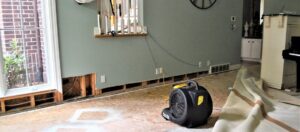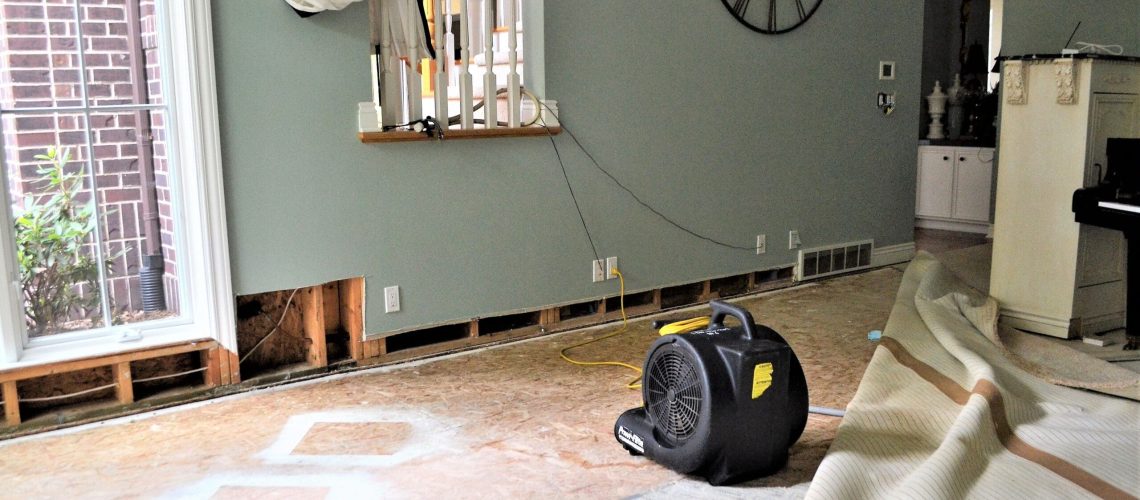Water damage is one of the most devastating forms of property damage. It not only destroys household items and furniture but can also cause structural damage to a home.
Water Damage Restoration can help repair the damage caused by a flood. They can use large pumps and vacuums to remove the water from a home or business. They can also disinfect the area and dry it out.
The first step in water damage restoration is to assess the level of water and moisture damage. This will help the specialists determine what materials can be salvaged and what needs to be replaced. It will also allow them to estimate the cost of the project and file a proper insurance claim, if applicable.
Leaking water from flooding, sewage backups, or even a broken pipe can cause severe and costly damage to structures and contents. It can wreak havoc on everything from furniture to wall framing, and it may lead to mold growth and other health hazards. That’s why it is important to get water-damaged homes and businesses dried out as quickly as possible.
When searching for a water damage restoration service, it is important to choose an IICRC-certified company. This means that the company has been trained and certified to follow industry standards and use the best tools for the job. Additionally, a reputable company will be able to provide testimonials from past clients, which can help homeowners decide if they’re the right fit for their home or business.
Another thing to keep in mind is that a company should be able to respond immediately to an emergency call, as standing water can cause a lot of damage in a short amount of time. If a homeowner doesn’t have their water restored within a day or two, the damage can become worse and even lead to structural damage. In addition, standing water can support the growth of mold and mildew, which can also be a health hazard for people with respiratory problems. Mold spores can cause allergic reactions such as sneezing, coughing, and headaches.
Remove the damaged materials.
The water damage restoration process starts with a comprehensive assessment of the affected area. This allows specialists to accurately measure the extent of the damage and identify any potential hazards. It also helps them craft a strategy to repair and restore the property as quickly and effectively as possible.
The next step is to remove any materials that have been impacted by the water damage. This includes drywall, insulation, carpets, and other porous materials that can easily absorb moisture and develop mildew or mold. It is crucial to take these items out of the area as soon as possible to prevent further damage. It is also a good idea to remove any electrical devices that have been exposed to the water, as they could be a fire hazard.
Once the affected materials have been removed, experts can begin the cleaning and drying process. This involves using a variety of specialized equipment, including dehumidifiers and air scrubbers, to decrease moisture levels in the home and eliminate harmful contaminants like bacteria, fungi, and mold. Sanitizing the area is also essential, as it can help protect the health of the home’s occupants.
It is important to remember that standing water can pose a serious safety hazard, particularly if it is black water from a sewer backup or flooding. This type of water can contain dangerous pathogens that can cause illness and even death. For this reason, it is vital to contact a professional, IICRC-certified water damage restoration company as soon as you notice any signs of water damage. They can provide a thorough inspection and assessment of the damage, as well as clean up any contaminated materials and safely dispose of them.
Dry the area
After shutting off the power and removing electrical appliances from a flooded space, it’s time to dry the area. This is best left to a professional water restoration contractor who has the proper equipment, including large pumps that can remove gallons of water at once. They can also position air movers and dehumidifiers to maximize the structural drying process.
It’s important to work quickly to dry the area because wet materials develop mold and mildew more rapidly when they’re left unattended. Mold spores begin to grow within 24 hours of water damage, and you could experience more serious structural problems if you wait too long.
Ventilation is a vital part of the drying process, so open any windows that aren’t blocked and allow the air to circulate freely throughout the space. If conditions are right, you can use fans to help speed up the drying process. Pedestal fans can be directed to dry higher areas, while circulator and blower fans powerfully move the air at lower levels. Window fans bring in fresh air from the outside and can create strong cross-currents of air to dry wet walls, floors, and furniture.
It’s also a good idea to set up tarps in places where water might reenter the building, such as after roof damage. These can be temporary solutions, but they’re critical if you want to avoid further damage. This is also the time to repair any places where water could reenter the structure, such as leaky doors and windows. You can temporarily patch these with duct tape, but it’s important to make permanent repairs as soon as possible. A contractor can install new weather stripping and seals to prevent further water penetration.
Sanitize the area.
After the water has been removed and the area has dried, it’s time to sanitize. This is a critical step in the restoration process and will help prevent mold and other health concerns down the road. This is especially important if the water was contaminated and may have carried bacteria or other pathogens onto the property.
Before beginning the cleaning and sanitization process, it’s important to make sure that all electrical devices are unplugged and safe to touch. You should also open all doors and windows to let in fresh air and lower indoor humidity levels, which will speed up the drying process. It’s also a good idea to disinfect any items that were soaked in flood waters, such as furniture or electronics. A mixture of 1 cup bleach per gallon of water should be enough to kill any bacteria or other harmful pathogens.
The sanitization and cleaning process can be lengthy and will depend on the type of water that caused the damage. Clean, clear water is the least dangerous, while gray or black water may contain contaminants and be hazardous to your health. Depending on the extent of the flooding, some materials may need to be replaced, such as drywall or carpeting that has been saturated by water.
Once all the repairs have been completed, the property will be sanitized and deodorized to ensure that there are no lingering bacteria or other pathogens. This will help to ensure that the property is hygienic and safe for all inhabitants to return to. During this final phase of the restoration process, professionals will use specialized tools to remove any remaining moisture pockets from walls and floors. This will also prevent long-term issues such as wood rot and mold growth.
Clean Up
After the water has been removed and the area has dried, it’s time to clean up. This can include removing any furniture or personal belongings that were affected by the water damage, cleaning up debris, and disinfecting the area.
This step is especially important if the water is dirty or contaminated. If left untreated, contaminated water can cause health issues like diarrhea and even toxic mold growth. To ensure that the area is safe to return to, it’s a good idea to clear out all of the wet materials, such as clothing, towels, and linens, and move them to a dry and ventilated location. This can be a daunting task, but it’s essential to help prevent mold and mildew from growing in the area.
It’s also a good idea to wipe down all surfaces with a disinfectant, such as bleach or other homemade cleaner, to remove any bacteria that may be present. This will also help prevent any future damage to the surfaces from occurring.
Finally, it’s a good idea to open all of the windows and doors in the home or business to allow air circulation and to help speed up the drying process. This is particularly important if the property was damaged by blackwater or sewage water, which can contain dangerous bacteria that can make people sick. It’s also important to turn off any electricity in the affected areas, as standing water can cause electrical shorts and fires. This should be done immediately after identifying and shutting off the source of the water. Using fans to circulate the air and dehumidifiers to reduce moisture is a great way to help with this step.

